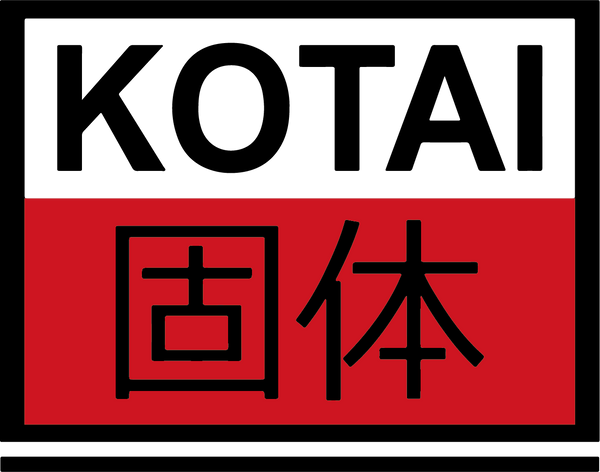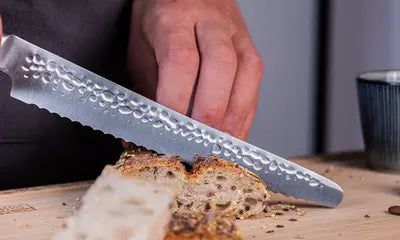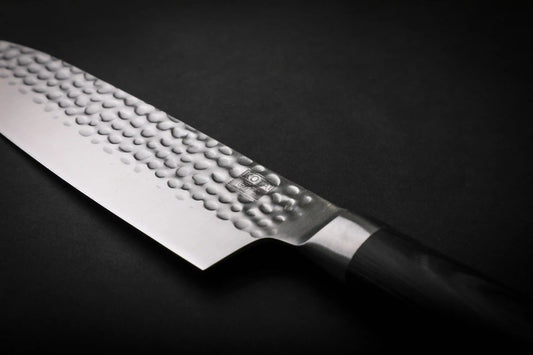Santoku or Gyuto: which one to choose?
Choosing the right equipment for your kitchen is a crucial step in combining performance and pleasure on a daily basis. Regarding knives, there are many options! You will need to take several factors into account to find THE perfect knife for your needs. Among the most popular choices are the Gyuto, also known as the chef's knife, and the Santoku.
Although the Santoku and Gyuto have some similarities, they are particularly distinct from each other. We will explore in detail each knife's characteristics in this article, to help you enhance your culinary experience by choosing the best knife for you.
What are the similarities between a Santoku and a Gyuto?
Unlike a paring knife, filet knife or bread knife designed for a specific use, the Japanese knives Santoku and Gyuto are multi-purpose. They can be used for almost any task in the kitchen!
Whether you need them for chopping, slicing or dicing, these knives are both perfect to perform all sorts of cutting tasks efficiently and with precision.
Santoku and Gyuto, what are the differences?
One of the first notable differences between a Santoku and a Gyuto is the length of the blade. The blade of a Santoku, measuring between 13 and 20 cm (5"11 to 7"8), is shorter than that of a Gyuto, measuring between 18 and 30 cm (7" to 11"8).
Another important difference between these knives is their blade profile. Whereas a Santoku has a rather straight edge making it ideal for chopping, a Gyuto's blade is curved from the center to the tip, making it more suitable for tilting.
Introduction and characteristics of a Santoku
The Santoku is a Japanese knife that is very popular in kitchens worldwide. The name: "San" - "Toku" means "Three Virtues" in Japanese, due to its multi-purpose blade, ideal for chopping vegetables and fruit, slicing meat, and preparing fish.
The Santoku is distinguished by its straight cutting edge, wide, sheep's foot-shaped blade and downward-curving spine leading to its tip. Its flat profile makes it ideal for cutting techniques such as tap-chopping or push-cutting. But the lack of curvature on the blade prevents it from being used in a rocking motion.
One of the advantages of a Santoku is its much lighter weight than a Gyuto, thanks in particular to its smaller size. It is therefore easier to handle and control when making delicate cuts such as preparing fish and sushi.
The Pakka Santoku
The Santoku knife from our Pakka Collection is handcrafted from ultra-sharp, high-carbon 440C Japanese steel, or Damascus steel. It is made of stainless steel and hammered, so that ingredients are less likely to stick to the knife. The pakkawood handle hides a full tang made to maintain the knife's balance and durability. Its blade is 180 mm (7").
Introduction and characteristics of a Gyuto
The Gyuto is a Japanese alternative to the classic Western chef's knife. By its very meaning, the Gyuto 牛刀 (or "cow saber") was originally frequently used to slice beef. Today, it is renowned for its versatility and universal use, even if it remains an expert in meat slicing.
Typically, the Gyuto is a long knife with a slight curve between the middle of the blade and the tip, making it ideal for a wide range of cutting techniques: push-and-pull cutting, mincing, or even a rocking motion.
The balance of a Gyuto is one of its greatest advantages. Proper weight distribution of the blade and handle is essential, as it makes the knife easier to handle when cutting.
The Pakka Gyuto
The Gyuto Chef Knife from Kotai's Pakka collection is handcrafted from ultra-sharp, high-carbon 440C Japanese steel, or Damascus steel. It is made of stainless steel and hammered, so that ingredients are less likely to stick to the knife. The pakkawood handle hides a full tang made to maintain the knife's balance and durability. Its blade is 200 mm (8").
To sum up…
Choosing between a Gyuto and a Santoku will depend on your personal preferences, your comfort of use and the cutting tasks you intend to perform.
- The versatile Gyuto is ideal for a wide variety of cutting tasks, thanks to its curved blade and balanced weight.
- The Santoku, on the other hand, excels in precision, and is suitable for smaller cuts thanks to its straight blade and size.
And if you're still hesitating, there is no reason not to add both knives to your magnetic knife holder or leather knife roll-up bag...
Remember, proper care for your knives is essential; check out our best maintenance tips now!











